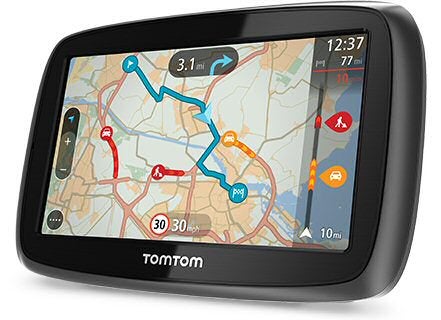TomTom GO 40 Review
TomTom GO 40
The TomTom GO 40 is a traffic beater at a highly affordable price
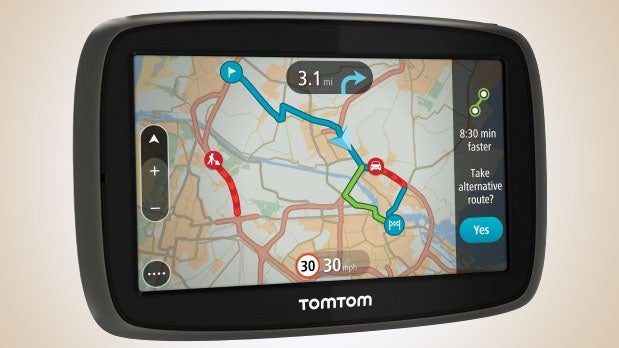
Verdict
Pros
- Lifetime TomTom Traffic
- Lifetime European maps
- Great value
Cons
- Live services require smartphone connection
- Relatively low-resolution resistive touch screen
- Single USB power connection on car adapter
Key Specifications
- Review Price: £139.99
- 4.3-inch widescreen with 480 x 272 pixels
- Maps for 45 European countries with lifetime updates
- Lifetime TomTom Traffic
- Live services via smartphone
- Integrated mounting system
What is the TomTom GO 40?
The TomTom GO 40 is TomTom’s new entry-level 4.3-inch sat-nav. Although the current price just shy of £140 doesn’t sound like a huge bargain when you can pick up similarly-sized sat-navs for under £100, this should be balanced against the fact that the GO 40 comes with lifetime updates for its European maps and, even more crucially, a lifetime subscription to TomTom’s Traffic service.
It’s fairly obvious that sat-nav manufacturers are feeling the pressure from the increasing capabilities of smartphones. Garmin has hedged its bets by providing a smartphone peripheral in the form of the HUD . But TomTom’s approach has been to bring its secret weapon down to a new level of affordability. As we have argued many times before, TomTom’s Traffic is the most accurate system we know of for detecting jams as they build up. So to have it in a device costing less than £140 is fantastic.
However, unlike TomTom’s premium models, such as the GO 5000, the GO 40 does not have its own built-in mobile data connection. Instead, as with the GO 60 and GO 600, you must pair the GO 40 with your smartphone so the sat-nav can use your smartphone’s data connection instead. It then functions in exactly the same way, calculating routes around traffic and suggesting better routes when traffic builds up along your current journey.
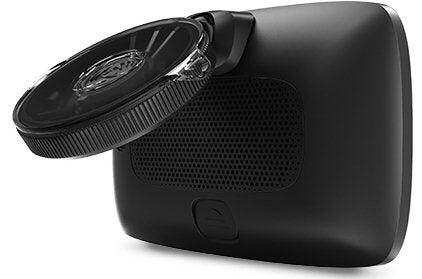
TomTom GO 40 – Design
Our one criticism here is that the car power adapter only has a single USB connection for the sat-nav itself. It would be better if you could power your smartphone as well, since constant use of Bluetooth and the mobile data connection is likely to drain its battery relatively quickly. Garmin has at least thought of this with the HUD . You can pick up a dual USB adapter for a fiver, though, which would probably be a worthwhile investment.
Like the GO 60, the GO 40 comes with an integrated mount. This angles from one edge, but can slide out and be reinserted on the other edge. So the GO 40 can either hang down from your windscreen or sit on top of your dashboard as required. The power connection uses a conventional micro USB port, with cable provided, but you will need to connect this each time you set up the GO 40. There’s no quick-release system as with TomTom’s premium sat-navs.
SEE ALSO: TomTom GO 60
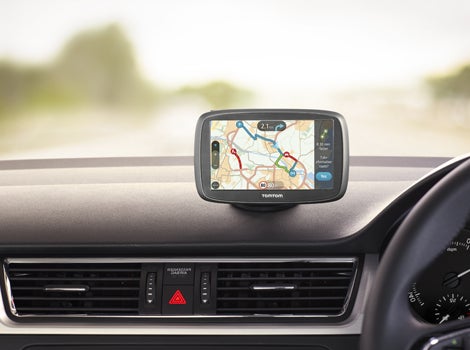
The 4.3-inch screen has a relatively lowly 480 x 272 resolution. It also uses the less responsive (but cheaper) resistive technology, rather than a capacitive system. It’s still very usable, but you can’t swipe around the interface with quite the same fluidity as TomTom’s capacitative-screened models. The interface itself is the new design we first came across in the GO 6000.
This interface has been vastly simplified compared to the previous generation, and the GO 40 uses the same ribbon of icons that take you to the key options with a few clicks. Primarily, you can find destinations from both the address database and points of interest via a single keyword search. This has become the norm amongst most mainstream sat-nav brands now, and certainly beats having to enter an address in a very rigid sequence, or having to know which category a POI is in.
SEE ALSO: Best Sat Navs
TomTom GO 40 – Navigation
However, our review of the GO 40 coincides with a slew of enhancements, although these are available as free updates across the range of new TomTom GO sat-navs. The performance of the voice control has been improved, and a whole range of new languages added. The alternative route planning system lets you display up to three alternative routes, with associated durations, so you can select the one that suits the journey you want – for example, avoiding a particular motorway.
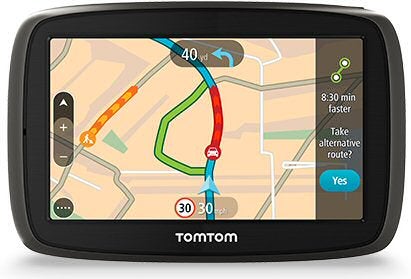
Online search brings back TomTom Places, although this is still not up to the standard of Google Local Search that used to be included, before TomTom’s agreement with Google ended. Support for TomTom’s Map Share facility, where you can report discrepancies in the maps for verification, is another connective service that has been added in again with this update.
You also now have the option to make the Route Bar on the right wider, so it can contain more information – such as estimated time of arrival as well as the distance and time to destination – although this might be more relevant for the devices with larger screens and more desktop space than this 4.3-inch model. The wider Route Bar also shows road exit information, amenities, plus additional information about fuel stops and rest areas.
Apart from the option to have a wider Route Bar, which we have already mentioned, the map has changed slightly in the software included with the GO 40, although again all the new range can have this update for free. The new software version uses brighter, higher-contrast colours by default, which makes the route clearer on a smaller-screened device like the GO 40. You can also change the colour scheme to a variety of vibrant alternatives.
Other than these factors, the navigational experience hasn’t seen much change compared to previous models in the new range. The next turning is illustrated at the top, with your current speed and the limit at the bottom. There’s now a quick menu when you tap the current location, which allows you to report a speed camera, report a change in the speed limit, or mark the current location for later recall. Points of Interest icons on the map show more information, but otherwise the map screen remains unchanged.
Should I buy the TomTom GO 40?
The TomTom GO 40 brings the company’s excellent Traffic service to a new low price. So if you’re a regular traveller, but baulked at the cost of TomTom’s premium sat-navs, this could be the device that finally allows you to take advantage of this time-saving technology. The GO 40 definitely shows its non-premium status in other areas, but with lifetime European maps as well as Traffic, this could be all the budget sat-nav you need, whether you’re on the regular commute or planning a driving trip on the Continent.
Verdict
The GO 40 brings TomTom’s brilliant Traffic services down to an even more affordable level, although you will need to supply your own smartphone mobile data connection.
Looking for a larger Sat Nav? Check out our full range of Sat Nav reviews
Trusted Score
Score in detail
-
Battery Life 8
-
Value 10
-
Features 9
-
Performance 9
-
Design 8
-
Usability 7
Features
| Screen Size (inches) (Inch) | 4.3in |
| Display Type | Color |
| General Features | Lifetime subscription to TomTom Traffic via smartphone connection; lifetime European map updates |
| Hands Free | No |
Physical Specifications
| Live Services | Traffic, speed cameras, and My Places via smartphone |
| Battery life (Hour) | 2hr |
| Height (Millimeter) | 85mm |
| Width (Millimeter) | 126mm |
| Depth (Millimeter) | 21mm |
| Weight (Gram) | 216g |


